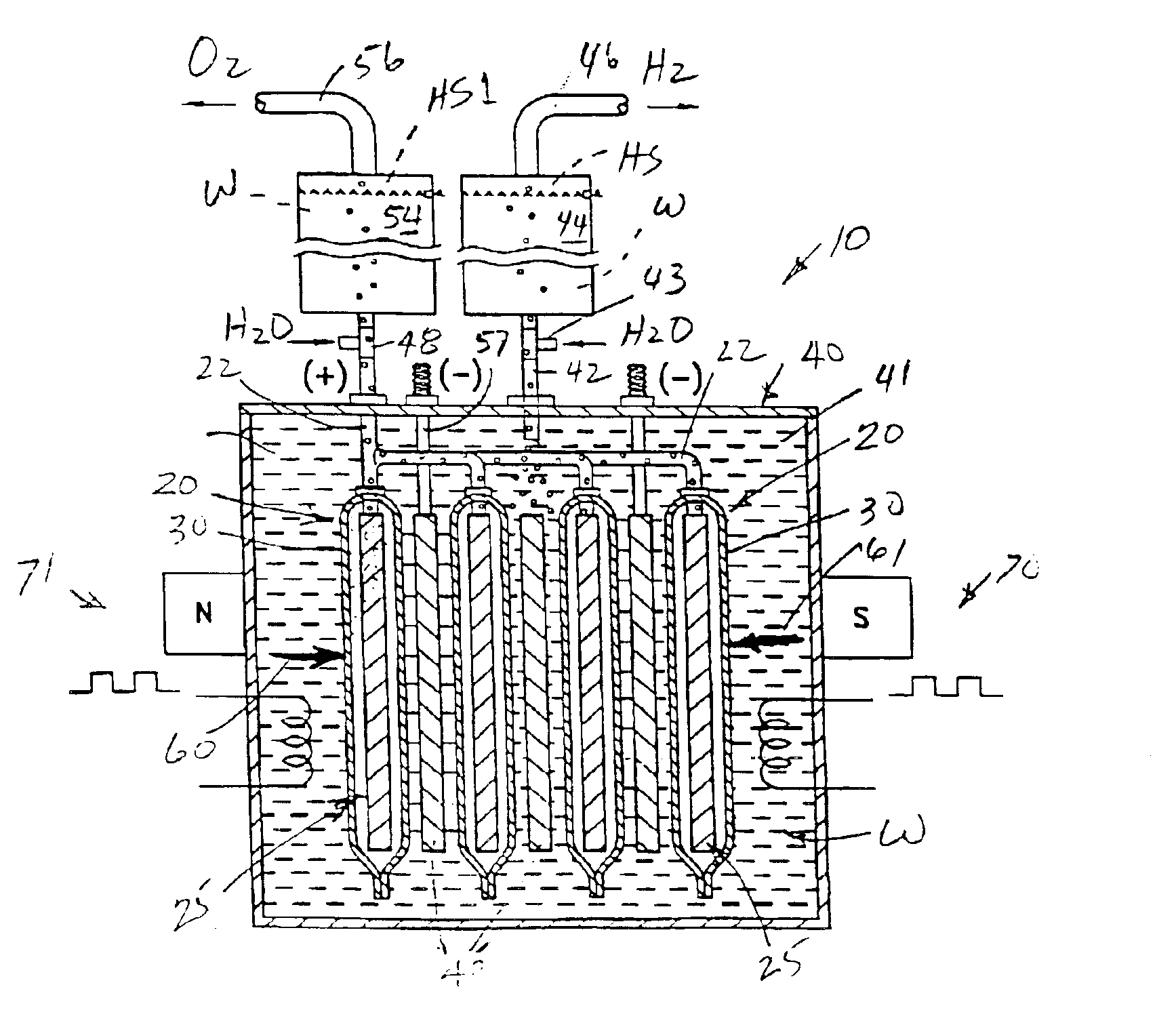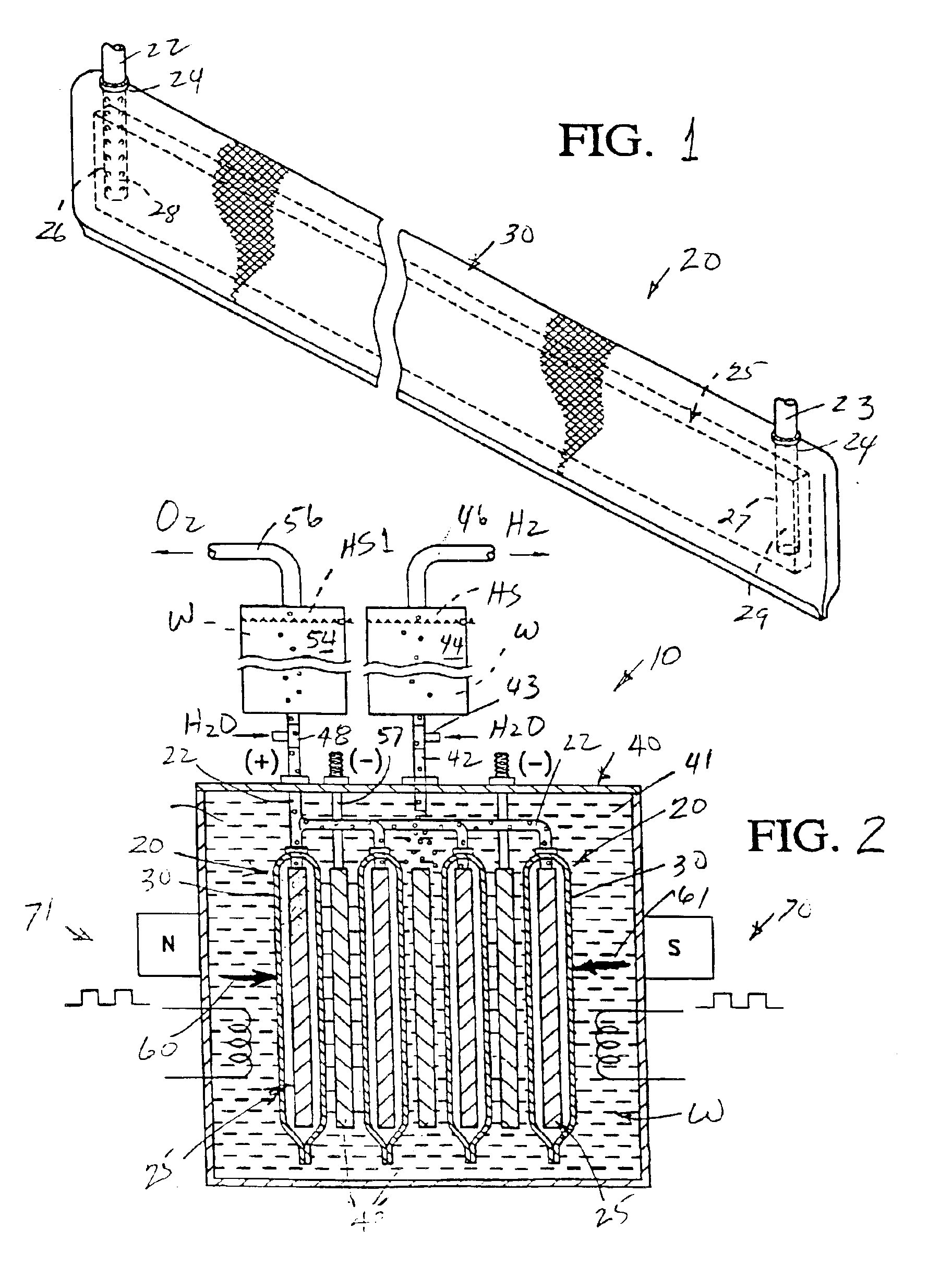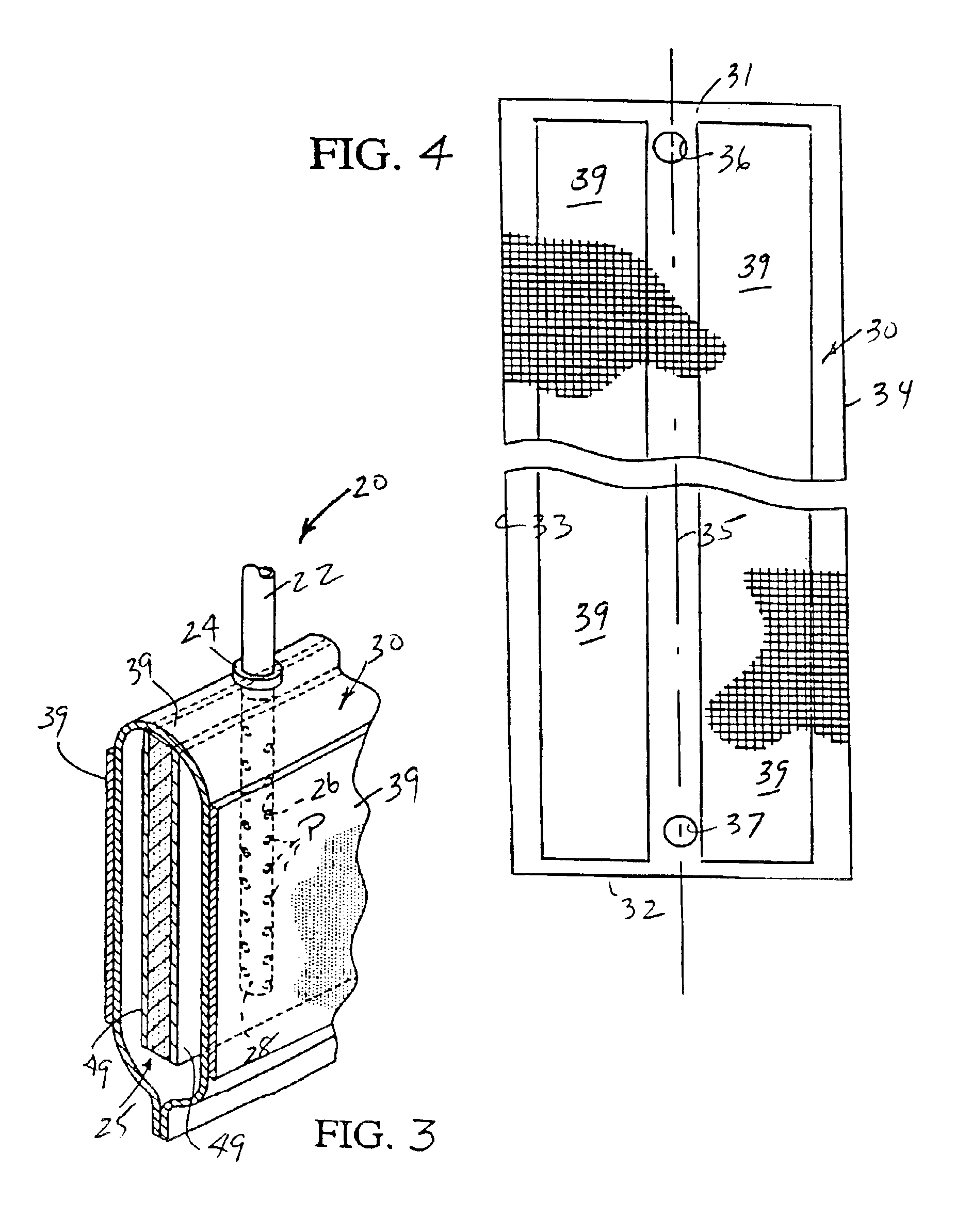Apparatus for converting a fluid into at least two gasses through electrolysis
a technology of fluid and gas, applied in the field of apparatus for converting fluid into at least two gasses, can solve the problems of increasing the complexity of what on the surface, requiring a large amount of electrical power, and inefficient generation of the latter, and achieves low power input, low cost, and significant reduction of anode/cathode arcing.
- Summary
- Abstract
- Description
- Claims
- Application Information
AI Technical Summary
Benefits of technology
Problems solved by technology
Method used
Image
Examples
Embodiment Construction
[0034]A novel liquid-to-gas electrolysis conversion system or apparatus for converting a fluid / liquid into at least two gasses, such as converting water into hydrogen and oxygen, through electrolysis is shown in FIG. 2 and is generally designated by the reference numeral 10.
[0035]A major aspect of the present invention involves the construction of a novel electrode encapsulation system 20 (FIG. 1) in the form of either an encapsulated anode or an encapsulated cathode, depending upon the manner in which current is connected to and flows therethrough.
[0036]The electrode encapsulation system or encapsulated electrode 20 is defined by a porous electrode 25 (FIG. 3) and a substantially polygonal / rectangular sheet 30 (FIG. 4) of relatively flexible material.
[0037]The porous electrode 25 is preferably constructed from electrically conductive sintered stainless steel or sintered nickel, but if made of solid electrically conductive material, such as solid stainless steel, the same is prefera...
PUM
| Property | Measurement | Unit |
|---|---|---|
| electron conduction | aaaaa | aaaaa |
| metallic | aaaaa | aaaaa |
| flexible | aaaaa | aaaaa |
Abstract
Description
Claims
Application Information
 Login to View More
Login to View More - R&D
- Intellectual Property
- Life Sciences
- Materials
- Tech Scout
- Unparalleled Data Quality
- Higher Quality Content
- 60% Fewer Hallucinations
Browse by: Latest US Patents, China's latest patents, Technical Efficacy Thesaurus, Application Domain, Technology Topic, Popular Technical Reports.
© 2025 PatSnap. All rights reserved.Legal|Privacy policy|Modern Slavery Act Transparency Statement|Sitemap|About US| Contact US: help@patsnap.com



